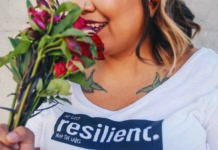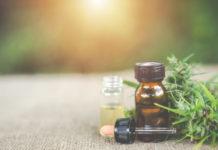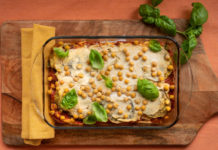
Melanoma is the most common cancer in Canada. There are many misconceptions when it comes to sun safety—and they can be deadly. Make a commitment to take sun protection seriously, starting with these tips.
Canadians are covering up less and seeking the sun more—even though UV radiation is the major risk factor for all types of skin cancers.
We’re paying the price.
Skin cancer is the most common cancer in the country. The incidence rate of the most deadly form, melanoma, has been increasing by 2 percent per year. Survival rates are heartening, but mortality is rising.
This needs to change. Start with these tips, and use them in combination. Sunscreen alone will not necessarily lower your skin cancer risk, and not all clothing offers total protection. Find your safe skin sweet spot. Stave off sunburn and avoid excessive UV ray exposure, but don’t take the vampire approach and flee every sunbeam.
16- to 24-year-olds
are the least likely of all Canadians to protect themselves, and those of us with children aren’t always covering the kids up, either. The majority of Canadians aged 1 to 12 are in sunlight for at least half an hour on a summer’s day, but only those 5 and under are regularly armed with sun protection. Considering a single severe sunburn sustained in childhood or adolescence can more than double one’s chance of developing melanoma, we should remember what one study warned: “Regular sun protection among Canadian children is low, given their sun exposure.”
The action: Carry extra hats and sunscreen with you to ensure the kids, teens, and young adults in your life protect themselves.
5 to 15 minutes in midday sun a few times a week may be adequate for some people to get sun-synthesized vitamin D, but remember: there’s no level of UV exposure that’s guaranteed as safe. It’s a catch-22: our bodies manufacture vitamin D when we’re exposed to the same rays that cause skin damage. Fortunately, we can largely get adequate vitamin D through diet plus supplements—something Canadians should be doing most months of the year anyway.
The action: Speak with your health care practitioner to determine if you need to be tested for vitamin D deficiency, as well as what level of sun exposure might be right for your skin type and medical history.
97 percent of sunburn-causing rays are blocked by SPF30 sunscreen. What many people don’t realize is that sunscreens with higher SPFs block little, if any, more UVB radiation than that. Sun protection factor (SPF) ratings, which are a measure of sunscreen’s ability to screen out UVB rays, can be confusing. The Environmental Working Group warns that extremely high SPFs can lead people to believe they are better protected than they are and that they can stay out longer in the sun, thus increasing damaging UV exposure.
The action: Generously apply broad spectrum (protecting from both UVA and UVB rays) SPF30; avoid higher SPF products.
2 basic types of sunscreen exist: chemical and physical. Physical zinc- and titanium-based mineral sunscreens don’t penetrate the skin and do a good job ensuring UV rays don’t, either.
The action: For a detailed guide to sunscreen, check out the Environmental Working Group’s annual sunscreen guide: ewg.org/consumer-guides.
0.1 to 1% concentrations of a certain type of vitamin A called retinol in sunscreen can increase sun sensitivity, according to Health Canada. In fact, Health Canada’s draft sunscreen rules state such sunscreens should bear this warning: “Please limit sun exposure while using this product and for a week afterwards.” The Environmental Working Group goes further, warning vitamin A on sunlight-exposed skin may speed the development of skin cancer. Although many cancer agencies dispute this, it’s best to avoid the ingredient in sunscreen.
The action: Read sunscreen labels and avoid products that contain retinyl palmitate, retinyl acetate, or retinol.
#1 spot where non-melanoma skin cancer appears is the face. In a recent study, the ears were the third most common spot for at least one type of skin cancer to appear. Men were more likely to develop skin cancer of the ear, possibly because their shorter haircuts leave ears more exposed.
The action: Really protect the ears and face (that means getting every groove and ridge with sunscreen and sporting a hat).
“Hole effect” is something clothing can suffer from. When garments are wet, worn out, or tight-fitting, there are greater gaps between threads, and they’ll do a poorer job of blocking the sun. That includes most clothing specially rated for ultraviolet protection factor (UPF). So even if you’ve ticked all the boxes—pants and long-sleeved shirt plus wide-brimmed hat—be aware of changes to your protection. And if you opt for UPF-rated clothes, avoid those treated with chemical sunscreens.
The action: Contrary to travel agency images of beachgoers in head-to-toe white linen, choose bright or dark-coloured clothing and shiny, tightly woven fabrics, not matte ones.





